SEA-LIFT: New system for installation and maintenance of floating marine energy cost reduction farms

SEA-LIFT consortium members in a working session at IHCantabria’s facilities
Sustainability, cost reduction and technological development are some of the benefits offered by the SEA-LIFT project, whose main objective is to develop a revolutionary system for the installation and maintenance of offshore wind farms
The European Green Pact contains Europe’s long-term strategic vision with the objective of achieving a competitive, inclusive and climate-neutral economy by 2050. In line with this plan, the EU Strategy on Marine Renewable Energies proposes to increase the production capacity of this type of energy in Europe from its current level (16 GW) to – at least – 60 GW in 2030 and, 300 GW, in 2050. Currently, according to Wind Europe, “ports are a crucial element in the supply chain of offshore wind farms and one of the technological and logistical challenges they face is to have their own low-cost means to be able to develop the port operations of the floating offshore wind sector”.
In this context, the SEA-LIFT project, in order to facilitate the evolution of the offshore wind market, proposes the elimination of the need for current large tonnage and low availability cranes, as well as the reduction of offshore displacements, by allowing maintenance operations to be carried out in-situ or in port, thus optimizing the availability factors of the wind farm.
SEA-LIFT is a research project funded under the TRANSMISIONES 2023 call of the Spanish Research Agency(AEI) and the Center for Technological and Industrial Development(CDTI). The consortium, made up of five companies and two research centers, will take as its starting point NABRAWIND ‘s Skylift technology of self-stacking towers (already in use in onshore wind farms), and will work on its evolution for use in offshore wind. To this end, the consortium will count on the participation of SAITEC and NAUTILUS, as benchmarks in the Spanish floating wind sector, as well as the experience of INGECID and TETRACE in the development of products and processes for the offshore sector. The participation of IHCantabria will allow to simulate and validate the technology in its test tanks, while CENER will develop the necessary control techniques for the self-powering of towers on floating platforms.
With all this, the consortium aims to develop a new installation and maintenance system that will facilitate the evolution of the offshore wind market, by installing high-power turbines (15 MW-20 MW) and at greater depths, overcoming the technical and economic barriers that currently exist. Because SEA-LIFT will allow the assembly of the key elements of the wind turbine in both fixed and floating offshore substructures. Its versatile design will allow installation both in harbors and at sea. This flexibility represents a major innovation.
Research at the service of industry
The collaboration of reference research centers in the field of marine renewable energies, such as IHCantabria and CENER, will allow the development of new strategies and methodologies that will allow the industry to position itself at the forefront of offshore wind energy. Two will be the outputs of the IHCantabira-CENER binomial: on the one hand, new methodologies will be developed for the simulation of the dynamic behavior of floating structures in ports by means of coupled port-platform analysis in order to reduce operating times and costs in port. On the other hand, an in-depth experimental validation process of the control system of the wind turbine self-righting tool will be carried out.
An industry committed to innovation
The SEA-LIFT project seeks to develop an innovative solution for the installation and operation of offshore wind farms. This will result in improved availability of installation means, more flexibility in the planning and execution of new projects. Compared to traditional systems, SEA-LIFT estimates a significant reduction in the implementation costs of this type of solution, which according to the consortium’s calculations is 3 to 5 times more economical than traditional means. In addition, self-piercing methods reduce dependence on specialized port infrastructures or high load-bearing capacity, which is why SEA-LIFT will open up the market to ports that are currently uncompetitive due to their infrastructure.
It is for all these reasons that the contribution of the SEA-LIFT project to the offshore wind sector is expected to be very significant given the current technological evolution towards larger and larger turbines and increasingly ambitious installed power horizons for 2030-2050 in accordance with the strategy to meet the climate objectives that society requires.
More information on the SEA-LIFT project can be obtained through the following website: https://sealift.ihcantabria.com/

Project SEA-LIFT (PLEC2023-010279) funded by MICIU/AEI /10.13039/501100011033




